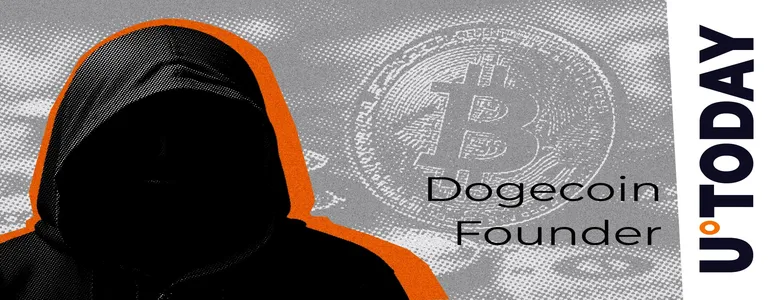PulseChain is a new blockchain designed to enhance and scale existing solutions in the cryptocurrency world. Initiated by Richard Heart, the founder of the HEX project, PulseChain aims to address issues related to high fees and slow transaction speeds in the Ethereum network. The project has attracted significant attention due to its innovative approach and plans to create a more eco-friendly and accessible network for users.
Content:
- Architecture and Operating Principles of PulseChain
- Advantages and Impact of PulseChain on the Cryptocurrency Market
- Comparison of PulseChain with Other Blockchains
- Development Plans and Future Prospects of PulseChain
- Conclusion
Architecture and Operating Principles of PulseChain
PulseChain is a fork of the Ethereum network with several improvements aimed at solving the current blockchain issues. One of the key aspects of PulseChain is its use of a Proof-of-Stake (PoS) consensus mechanism instead of Proof-of-Work (PoW), significantly reducing energy consumption and improving transaction processing speed. The PulseChain project promises greater scalability and accessibility, offering users the ability to transact with much lower fees compared to the original Ethereum network.
At the core of PulseChain is the idea of creating a parallel ecosystem that maintains compatibility with Ethereum while offering users better terms. This is achieved by fully copying all existing tokens and contracts from the Ethereum network into PulseChain, allowing asset holders in Ethereum to receive equivalent tokens in the new network. This scheme attracts the attention of developers and investors interested in reducing transaction costs while maintaining all the functions available in the Ethereum network.
One of the most important components of PulseChain's architecture is the increase in network throughput. By reducing block time and increasing the number of transactions processed per second, PulseChain aims to eliminate the congestion often seen in the Ethereum network during periods of high activity. This is achieved through more efficient resource usage and node operation optimization.
Advantages and Impact of PulseChain on the Cryptocurrency Market
One of PulseChain's main advantages is the reduction of transaction costs. The Ethereum network is often criticized for high fees, especially during peak loads. PulseChain offers lower fees, making it attractive to a wide range of users, including decentralized application (dApp) developers and regular users conducting daily transactions.
Moreover, PulseChain has several environmental benefits. The transition from the Proof-of-Work to the Proof-of-Stake model significantly reduces the network's energy consumption, which is becoming increasingly important in the context of global efforts to reduce carbon footprints. While PoW-based networks such as Bitcoin and Ethereum (prior to its transition to Ethereum 2.0) require significant computational power and, consequently, high energy consumption, PulseChain demonstrates a more sustainable operating model.
PulseChain also impacts the DeFi market. Lower fees and improved transaction speed create more convenient conditions for using decentralized financial applications. Developers can transfer their projects to PulseChain while maintaining full compatibility with Ethereum, opening new horizons for innovation and decentralized ecosystem development.
For a visual comparison, the table below shows the main advantages of PulseChain over the Ethereum network:
| Criterion | PulseChain | Ethereum |
|---|---|---|
| Consensus Mechanism | Proof-of-Stake (PoS) | Proof-of-Work (PoW) |
| Transaction Fees | Low | High |
| Energy Consumption | Low | High |
| Transaction Speed | High | Medium |
| Compatibility with Ethereum | Full | N/A |
As a result, PulseChain could play a significant role in further developing the decentralized application ecosystem and the cryptocurrency market overall.
Comparison of PulseChain with Other Blockchains
PulseChain is not the only project offering improved conditions compared to traditional blockchains like Ethereum. Other projects such as Binance Smart Chain (BSC) and Polkadot also aim to address issues related to scalability and high fees. However, PulseChain has several features that distinguish it from its competitors.
First, PulseChain maintains full compatibility with Ethereum, allowing users and developers to transfer their assets and projects to the new network easily. Unlike other blockchains, which often require adaptation or even a complete overhaul of contracts and applications, PulseChain offers a seamless transition with minimal effort.
Second, PulseChain emphasizes reducing energy consumption, which is a significant advantage in the context of the global environmental agenda. This makes it attractive to those looking for more sustainable and energy-efficient blockchain solutions.
Finally, the PulseChain community actively supports the project's development, contributing to its rapid growth and adoption. Richard Heart, the founder of PulseChain, has already proven his ability to successfully launch and develop cryptocurrency projects, and his involvement in PulseChain adds an extra layer of trust and expectation to the project.
Compared to other blockchains, PulseChain offers a unique combination of low fees, high speed, and environmental sustainability, which could have a significant impact on the future of the cryptocurrency market.
Development Plans and Future Prospects of PulseChain
PulseChain is in its early stages of development but already has ambitious plans for the future. The project's main goals include expanding the network, attracting new developers and users, and further reducing transaction costs. Additional features such as enhanced smart contract support and advanced developer tools are expected to be launched soon.
The project also plans to actively interact with other blockchains and ecosystems, opening up new opportunities for cross-network interaction and improving market liquidity. In the long term, PulseChain could become the foundation for creating new decentralized applications and services that will leverage the network's advantages.
Among the challenges facing the project are the need to maintain a high level of security and network stability, as well as managing the growth of the community and ecosystem. However, given the current level of support and interest in the project, PulseChain has every chance of successful development and achieving its goals.
Conclusion
PulseChain is a promising project in the blockchain world, offering solutions to the current problems faced by Ethereum network users. Reduced fees, improved scalability, and environmental sustainability make it an attractive choice for developers and users. In the near future, PulseChain could become an essential part of the cryptocurrency ecosystem, offering new opportunities for innovation and growth.











Comments